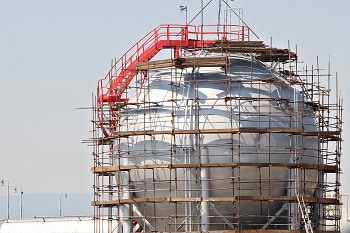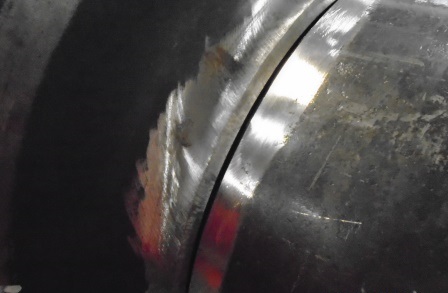The Value of Expert Tank Welding Inspection Providers
The Value of Expert Tank Welding Inspection Providers
Blog Article
A Comprehensive Introduction of Container Welding Inspection Standards and Methodologies for Improved Weld High Quality and Performance
The value of welding inspection requirements in the manufacturing of storage tanks can not be overstated, as they offer as the foundation for making sure weld stability and functional integrity. Various examination strategies, consisting of visual evaluations and progressed non-destructive testing approaches, are essential in determining possible defects that could endanger performance. Furthermore, adhering to regulatory criteria not just enhances weld quality yet additionally mitigates the threat of costly failures. As we check out the nuances of these methods, it comes to be critical to think about how a systematic approach can transform present techniques and cause substantial improvements in results.
Relevance of Welding Assessment Criteria

Welding inspection criteria incorporate a series of standards, consisting of material specifications, welding procedures, and qualifications of workers associated with the welding process. By implementing these requirements, organizations can methodically recognize and fix potential defects, thereby minimizing the probability of expensive repair services or catastrophic failures. Rigorous evaluation techniques foster a society of responsibility and accuracy, encouraging welders to preserve high levels of workmanship.

Usual Welding Evaluation Methods


Ultrasonic Examining (UT) is an additional widespread method, utilizing high-frequency audio waves to detect inner flaws that might not be visible externally. This approach is particularly reliable for recognizing gaps or additions within the weld steel. Magnetic Fragment Evaluating (MT) is likewise commonly utilized, specifically for ferromagnetic materials, as it reveals surface and near-surface issues through the application of magnetic fields and ferrous fragments.
Furthermore, Fluid Penetrant Testing (PT) discovers surface-breaking issues by applying a penetrant to the weld and after that using a programmer to attract out the penetrant. Each of these techniques adds to a comprehensive examination strategy, making sure that welds meet the strict quality criteria needed in storage tank building and construction.
Regulative Standards and Compliance
Regulatory requirements and compliance are vital elements in guaranteeing the security and dependability of welded structures in tank construction - Tank Welding Inspection. These requirements offer to develop minimum demands for product homes, welding treatments, and assessment methods, therefore minimizing the threat of structural failings and boosting total performance
Trick organizations, such as the American Culture of Mechanical Designers (ASME) and the American Welding Society (AWS), supply standards that are extensively embraced in the market. Conformity with these standards not just makes sure adherence to best methods however also satisfies legal and contractual obligations, guarding the passions of stakeholders.
Regulative bodies commonly mandate adherence to details codes, such as ASME Code Area IX for welding credentials and API 650 for welded tanks. These codes detail requirements for welding techniques, credentials of employees, and testing methods to validate weld integrity.
Normal audits and examinations are critical to maintaining conformity, as they aid determine deviations from developed standards. Non-compliance can cause considerable penalties, task delays, and safety and security dangers. Therefore, a robust understanding of governing requirements and a commitment to conformity are extremely important in attaining high-quality and resilient welded tank structures.
Non-Destructive Testing Methods
How can the stability of bonded structures be ensured without causing damages? Non-destructive screening (NDT) methods offer a durable option, making it possible for inspectors to assess weld high quality without endangering the product - Tank Welding Inspection. Among the most common NDT methods are ultrasonic testing (UT), radiographic screening (RT), magnetic bit testing (MT), and color penetrant screening (PT)
Ultrasonic screening utilizes high-frequency sound waves to detect internal problems and identify material residential properties. It offers specific measurements their website and is particularly effective for thick materials. Radiographic screening includes passing X-rays or gamma rays via the weld, creating images that expose architectural issues such as cracks or gaps. This technique is invaluable for analyzing the integrity of complicated welds.
Magnetic fragment testing is fit for ferromagnetic products, where electromagnetic fields reveal surface area and near-surface interruptions. Color penetrant screening over here utilizes a fluid color to highlight surface-breaking imperfections, making it an efficient method for non-porous materials.
Each of these NDT approaches has distinctive advantages, enabling comprehensive evaluations tailored to specific materials and welding processes. By executing these techniques, sectors can make sure the dependability and safety and security of bonded structures, inevitably boosting general performance.
Enhancing Weld High Quality Via Assessment
Reliable assessment plays a crucial function in boosting weld quality, offering as a crucial checkpoint in the construction process. By determining prospective defects early, examinations mitigate the threat of jeopardized structural integrity and make sure compliance with market standards. Employing a combination of aesthetic evaluations, non-destructive screening (NDT) methods, and mechanical analyses, assessors click this site can detect issues such as porosity, splits, and incomplete combination.
Applying a durable evaluation procedure not just improves the general high quality of welds however likewise fosters a society of liability among welders and fabricators. Regular training and certification of assessment employees make sure that they are equipped with the necessary skills to recognize and deal with potential problems efficiently. This proactive technique reduces rework and associated costs, eventually adding to forecast effectiveness.
In addition, comprehensive documentation of examination searchings for offers valuable understandings into reoccuring concerns, promoting constant renovation in welding methods. By leveraging advanced technologies, such as automated ultrasonic screening or electronic radiography, weld top quality can be boosted via a lot more accurate examinations. To conclude, a rigorous inspection process is essential in attaining top quality welds, making sure security, dependability, and long life in container construction.
Conclusion
In verdict, the application of rigorous tank welding examination criteria and methods is vital for making certain weld stability and efficiency. By making use of a mix of visual examinations, non-destructive testing techniques, and adherence to regulatory standards, companies can properly recognize and mitigate potential issues.
Report this page